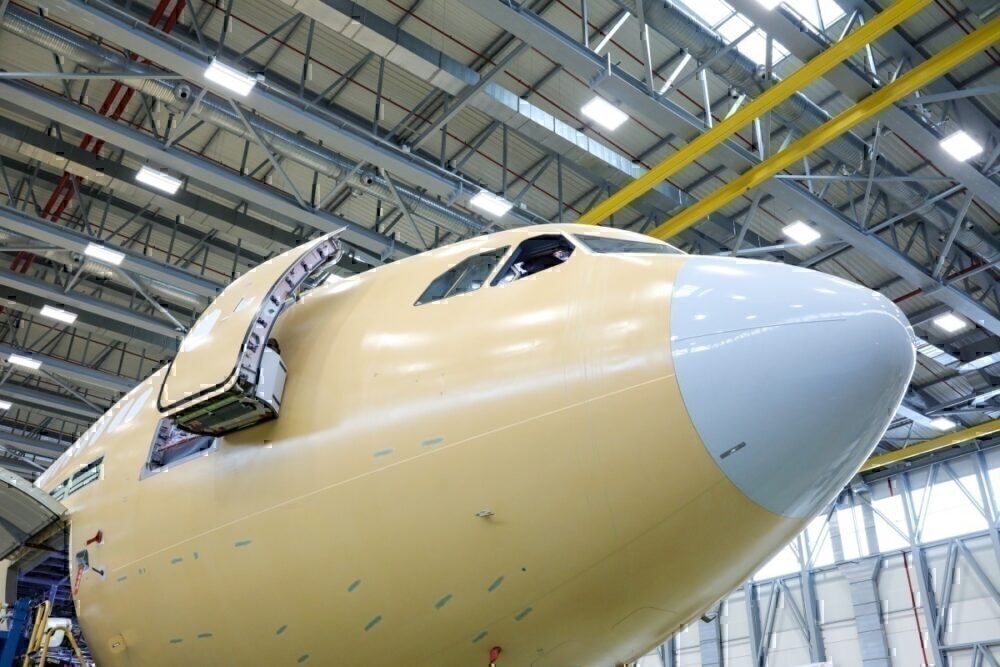
Enhancing Aircraft Paint and Coating Quality Through Automation: Whats New?
Share
In today's fast-paced aerospace industry, the need for enhancing aircraft paint and coating quality through automation has become more crucial than ever. As tech professionals and enthusiasts, we understand that achieving the optimal finish on an aircraft not only contributes to its aesthetic appeal but also plays a vital role in protecting the aircraft from environmental factors, ensuring its longevity. Automation in the painting and coating process has emerged as a game-changer, leading to improved efficiency, consistency, and overall quality.
But what exactly does it mean to enhance aircraft paint and coating quality through automation? This article will delve deep into the various automated technologies that are revolutionizing aircraft painting processes, while also discussing the benefits and challenges that come along with implementing these innovations.

1. The Role of Automation in Aircraft Painting
Automation has transformed several industries, and aircraft painting is no exception. By leveraging modern technologies such as robotics, artificial intelligence, and machine learning, the painting process has become more streamlined and effective. These automated systems help to ensure that the coatings applied are uniform, durable, and of high quality.
For instance, robots can handle vast volumes of paint with precision and speed that outmatch human capabilities. This not only accelerates the workflow but also reduces the chances of defects. Eliminating paint defects can significantly lower maintenance costs and improve customer satisfaction.
2. Benefits of Automated Painting Systems
2.1 Increased Efficiency
The efficiency of the aircraft painting process has improved drastically due to automation. Automated systems can operate continuously, allowing for the completion of projects faster than manual labor ever could. This means less downtime for aircraft and quicker turnaround times for airlines.
2.2 Improved Quality Control
Automated systems are programmed to perform consistent checks throughout the application process, leading to uniformity in the paint finish. This can help to maintain high standards of quality that human operators may not consistently achieve.
2.3 Cost Savings
While the initial investment in automation technology may seem high, the long-term cost savings can significantly outweigh these upfront costs. Reduced waste from mistakes, lower labor costs, and increased throughput contribute to the financial advantages of automation.
3. Challenges in Implementing Automation
Despite the great benefits that come with automating aircraft painting processes, there are also challenges that the industry must face. One significant hurdle is the cost of technology acquisition and integration. Transitioning from a manual to an automated system requires a careful consideration of both financial investments and time constraints.
3.1 Skill Gaps in Workforce
The introduction of automated systems also presents challenges regarding the skillset of the workforce. Current employees may require training to operate and maintain new technologies successfully. It is crucial to invest in employee development when implementing such changes to avoid disruption in the painting process.
3.2 Maintenance and Reliability
Automated systems need regular maintenance to operate efficiently and avoid unexpected downtimes. Companies must keep in mind the ongoing costs associated with maintaining these systems, including spare parts and service technicians.
4. Future Trends in Aircraft Painting Automation
The future of enhancing aircraft paint and coating quality through automation looks promising. As technology continues to evolve, we can anticipate new advancements that will further improve processes.
4.1 Artificial Intelligence Integration
Artificial Intelligence (AI) is set to play an increasingly significant role in aerospace manufacturing. AI algorithms can assess environmental conditions and predict the best painting strategies, ensuring optimum results. As discussed in boosting aircraft paint line efficiency, AI will enhance decision-making processes.
4.2 Advanced Coating Technologies
Breakthroughs in coating technologies are also on the horizon. Innovations such as self-healing paints and anti-corrosion coatings will further improve the durability of aircraft finishes. Companies must stay abreast of these advancements to ensure they maintain a competitive edge in aircraft quality.
5. Conclusion
Enhancing aircraft paint and coating quality through automation is not merely a trend but a necessity in todays aerospace industry. From improved efficiency to enhanced quality control, the advantages of automating painting processes cannot be overlooked. However, it is imperative to address the challenges that come with these technological advancements to ensure a smooth transition.
As tech professionals, the opportunity to innovate within aircraft painting through automation is profound and will only continue to grow in importance as we move toward an increasingly digital future.

FAQs
1. What are the main benefits of automating aircraft painting?
The main benefits include increased efficiency, improved quality control, and significant cost savings in the long run.
2. What challenges do companies face when implementing automated systems?
Challenges include costs associated with technology acquisition, skill gaps in the workforce, and ongoing maintenance requirements.
3. How can AI improve aircraft painting processes?
AI can optimize painting strategies by assessing environmental conditions and making data-driven decisions to achieve quality results.
For further insights on aircraft painting, check out six facts about airplane paint.
